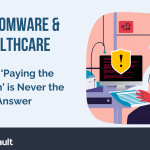When performing a scan of your system servers, applications, and network devices, it’s not uncommon to see certain, predictable vulnerabilities showing up in the results.
As each vulnerability represents a potential “weak spot,” or opening for attackers to penetrate and compromise your system, it’s important to be aware of them. The following represent the 3 most common vulnerabilities:
Weak Cipher Suites/Protocols
Cipher suites are unique sets of methods or cryptographic algorithms, used for securing and encrypting data. They are used to turn plaintext into ciphertext (i.e. the word “hello” would turn into a random scrambled text like “grkki”).
In non-technical terms, data becomes unreadable by hackers because the algorithms used by the cipher suites and protocols scramble the normal characters into a mixed combination of random letters and characters that are unreadable by humans.
Now imagine having a safety deposit box with weak locks, or locks that are easy to pick because of outdated lock security protocols or methods. These Cipher Suites and protocols need to be configured by an individual with information technology experience, able to ensure that ciphers are sufficiently strong.
SSL/TLS Expired Certificate
Certificates are used as a way of authenticating if the web traffic of a website is secure and legitimate. They are given out by Certificate Authorities to websites that are using SSL/TLS encryption methods to secure data. Certificate Authorities are entities that issue digital certificates.
A digital certificate certifies the ownership of a public key (in this case the SSL/TLS encryption method) by the named subject of the certificate (the website owner). Certificates grant permissions to use encrypted communication via Public Key Infrastructure and also authenticates the identity of the certificate’s holder.
It’s like driving with an expired license; you may still choose to drive, but will face the consequences if you get caught. Similarly, you may have secure encryption on your site with an expired certificate, but since it has expired there may be potential vulnerabilities associated with the SSL/TLS encryption. Getting a new certificate is necessary to ensure that SSL/TLS encryption is up-to-date, and your site is protected.
Missing Secure – Cookie Attribute
When a host is running a server with SSL/TLS, it still may be prone to information disclosure vulnerability. The flaw is due to a cookie not having a ‘secure’ attribute, which allows the cookie to be passed to the server by the client over non-secure channels (HTTP), thereby allowing an attacker to conduct session hijacking attacks.
If a hacker gains access to non-expired cookies that are insecure, they may be able to use the cookies to impersonate a user. This allows a login to a previous web session that may have used the insecure cookies during payment processes, email, banking, or social media sites.
Vulnerabilities as those described – Weak Cipher Suites/Protocols, Expired SSL/TLS certificates, and Missing `secure` Cookie Attribute – may occur on a regular basis. If staying on top of such security risks seems daunting, consider offloading your security scans and network oversight to a certified MSSP like HIPAA Vault. You can also request a Free Security Vulnerability Scan of your website.




